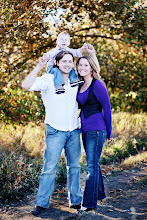Renee and I were invited to participate in a parent advisory board/panel on Infantile Spasms (IS). It is a rare disease and according to InfantileSpasmsInfo.Org it’s “an uncommon epilepsy syndrome that typically begins in infancy. Also known as West syndrome, it was first characterized by Dr. William James West in the mid-19th century as he sought help for his own affected child. Infantile spasms is considered to be a “catastrophic childhood epilepsy” due to the difficulty in controlling its symptoms and the developmental problems that can occur as a result of IS. Infantile Spasms typically begins in the first 4 to 8 months of life and is characterized by flexion (bending and jerking) of the trunk (torso) or neck and extremities (arms and legs). An episode can range from a subtle head jerk to a flexion that lasts for a few seconds. Most often, the spasms occur in clusters.”
The Parent Advisory Board Meeting was organized and funded by Questcor Pharmaceuticals, the makers of Acthar gel (ACTH), which has been considered the “gold standard” of treatment in the child neurology community since the 1950s. I clearly remember Zachary’s neurologist and the head of the neurology department at Children’s Hospital Denver telling me personally about the “gold standard” treatment consideration for ACTH when Zachary was in the hospital for his seizures.
The discussion and parental input focused on several issues - raising awareness for Infantile Spasms, considered a Rare Disease; creating a community for those who have a child with IS or are considered IS “graduates”, those whom medication helped stop the IS; spreading education and information about IS to parents, pediatricians, and child neurologists; giving back to the IS community; and discussing creative efforts surrounding Infantile Spasms Awareness Week in October.
The panel took place over the weekend of July 31 and August 1 in Palo Alto, CA. There were a total of eight families in attendance. The first evening, we all went out to a dinner to have a casual “meet & greet” experience. Family friends (and fellow Coloradoans) Matt and Tamara Cochran (Episode 10 & Episode 11) were in attendance as well as Chris and Megan Daniel who we met at the FDA hearing.
On Sunday, the formal panel took place, opening up with each family sharing their particular story and journey with Infantile Spasms. It was very interesting to hear each family’s story as each shared a common tale of what they experienced with IS exhibiting itself in their child – a quick spastic movement, bobbing of the head, jerk of the arms/legs, body moving in jack-knife fashion – and these movements happening in succession for a time, called clusters in the IS community.

What surprised me was the vast difference in outcome with the families who had success with IS medication stopping the seizures. Several families’ children developed normally and would be considered “typical” on all levels of development today. Others had underlining conditions such as cerebral palsy (like Zachary), or other brain issues.
Although IS was first medically chronicled in the 1800s, there still is very little information on it. As a rare disease, it affects about 1 out of every 3,200-3,500 children.
On average (45 out of 50 children affected) spasms appear for the first time between three-months to a year-old. According to the InfantileSpasmsInfo.org website, about 70% of IS cases are caused or linked by something to do with the Central Nervous System, brain development abnormalities, or genetic abnormalities.
For Zachary, the underlining cause was the severe brain damage (cerebral palsy) that occurred around his difficult birth.
But in 30% of cases, there is no known cause, and these children have the greatest odds of living a developmentally normal life.
Regardless of the cause, once diagnosed with IS, the goal of any neurologist is to get the seizures stopped as soon as possible. With each “cluster” of seizures, the child is experiencing some additional damage to their brain.
Our personal journey with IS, brought us to a neurologist who was very good and very professional in his care of Zachary. The neurologist wanted to take an aggressive approach to get them stopped immediately, but also be safe in medicating our child. We started on a three-week stint of Vigabatrin/Sabril (recently approved by FDA, but at the time Zach took it, 2007, it had to be purchased through Canada). This did nothing for his seizures. Our neurologist advised us of the “gold standard” for IS treatment, an injectable hormone called ACTH or Acthar gel, as labeled by Questcor Pharmaceuticals. We were advised of the side affects – significant weight gain, possible elevated blood pressure, and I think they told us diabetes too, but our neurologist assured us Zachary would be strictly monitored during treatment to make sure he would be safe.
It was a daily, one-shot injection. After the sixth one, Zachary’s seizures stopped completely. That was Nov. 6, 2007. To this day, he remains seizure free.
After the family stories, the panel switched gears to discuss the history of Questcor as a company, their commitment to the IS community in raising awareness, and ideas for Infantile Spasms Awareness week coming October 11-17, 2010, and for future years.
…to be continued…


